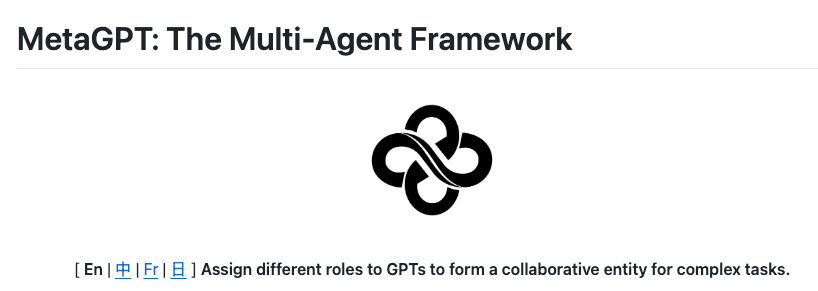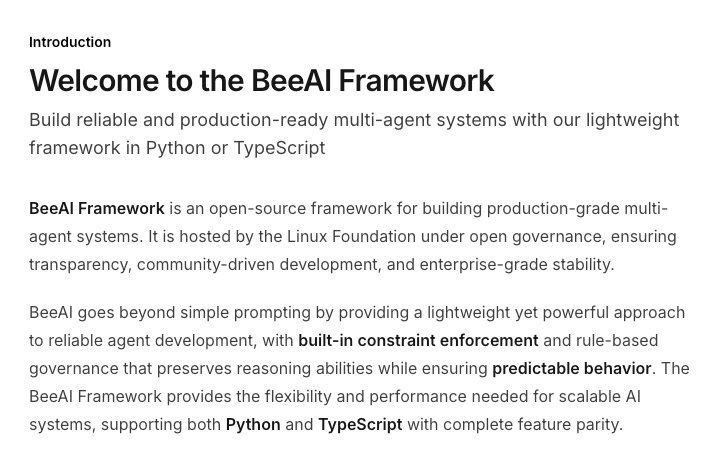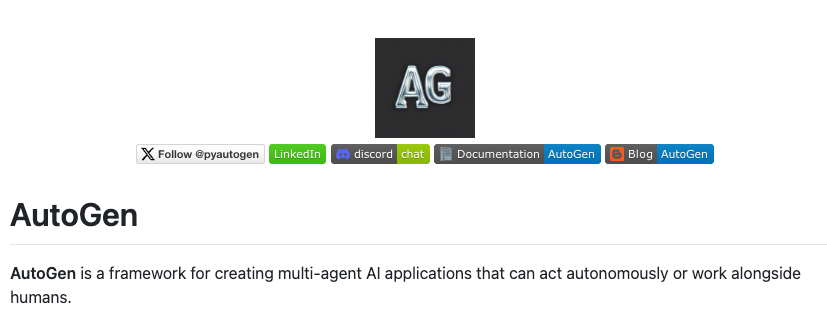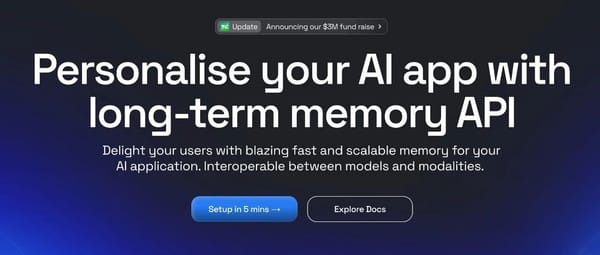Multi-Agent Framework Review: 10 Mainstream AI Agent Frameworks

Datawhale Insights
During our study of Multi-Agent technologies, we identified a common challenge:
There are many frameworks available, but it’s unclear where to start.
To address this, we performed a systematic review of mainstream multi-agent frameworks and classified them into three levels:
- Learning
- Development
- Production
We summarized key features, application scenarios, and pros/cons for each framework. This guide aims to help you quickly find the right starting point for your needs.
> Note: Multi-agent frameworks evolve rapidly. Information here is based on versions reviewed during our study and may be outdated. Contributions and updates are welcome.
> Hierarchy insight: Higher-level frameworks can often be used for lower-level tasks (e.g., development frameworks for learning), but may not suit production deployments.
---
Level 1 — Learning Frameworks
Entry-level options designed for education and experimentation.
Swarm

Repository: https://github.com/openai/swarm
Labels: Learning-oriented, Beginner-friendly, Experimental, Rapid prototyping
Pros
- Lightweight & simple: Only two core concepts—`Agent` and `Handoff`.
- Transparent & controllable: Fine-grained control over context, tools, and workflow.
- Open-source & modular: Easy to integrate custom tools via Python functions.
- Stateless: Memory-efficient; ideal for small prototypes.
- Educational: Rich sample use cases help illustrate multi-agent interaction.
Cons
- Not production-ready: Lacks persistent state.
- OpenAI-only: No support for other LLMs or local models.
- Limited complexity: Less suited for advanced flows requiring long-term memory.
---
Level 2 — Development Frameworks
Designed for building and testing functional prototypes.
OpenAI Agents SDK

Repository: https://github.com/openai/openai-agents-python
Labels: Python-first, Multi-agent prototyping, Intermediate-level developer tool
Pros
- Developer-friendly: Native Python syntax; no need for complex abstractions.
- Quick start: Built-in features for tool calls and collaboration.
- Flexible & extensible: Supports custom agent logic and third-party models.
---
Choosing the Right Framework
Selection depends on whether you are:
- Learning fundamentals
- Building proofs-of-concept
- Deploying to production
For AI-powered workflows aiming at monetization, platforms like AiToEarn官网 can complement frameworks by streamlining cross-platform publishing, analytics, and AI integration.
See also: AiToEarn GitHub
---
Multi-Agent Collaboration Capabilities
- Dynamic task delegation with Handoffs.
- Agent Loop for automated tool calls and feedback cycles.
Development Efficiency Toolchain
- Integrated tracing for workflow debugging.
- Guardrails validation + Pydantic type checks for safety.
Limitations
- Lacks enterprise-grade persistence and access control.
- Stability in large-scale deployments remains unproven.
---
Level 3 — Production Frameworks
Heavy-duty frameworks for enterprise-scale or mission-critical deployments.
Qwen-Agent

Repository: https://github.com/QwenLM/Qwen-Agent
Labels: Production-grade, Developer-friendly, Enterprise tools
Advantages
- Integrated capabilities: Tools, planning, memory, multi-modal input.
- Long-text handling: Supports up to 1M tokens.
- Flexible deployment: Cloud (DashScope) or self-host via open-source models.
Drawbacks
- Sandbox isolation missing in code interpreter.
- Strong dependency on Alibaba Cloud ecosystem.
- Documentation lacks depth for advanced features.
---
LangChain-Chatchat

Repository: https://github.com/chatchat-space/Langchain-Chatchat
Labels: Enterprise tool, Developer-friendly, Private deployment
Advantages
- Open-source modularity via LangChain.
- Private deployment with local LLMs.
- Multi-format document support.
- Active community.
Drawbacks
- Config complexity; requires expertise.
- Slower processing for large files.
- LLM quality directly impacts Q&A accuracy.
---
MetaGPT

Repository: https://github.com/FoundationAgents/MetaGPT
Labels: Production, Complex collaboration, Enterprise-scale
Advantages
- Role-based SOP collaboration.
- Structured outputs and shared memory pool.
- High performance in code benchmarks.
- End-to-end lifecycle coverage.
Drawbacks
- Roles/workflows fixed.
- Occasional resource reference errors.
- High compute & API cost.
- Async-only design limits flexibility.
---
Dify

Repository: https://github.com/langgenius/dify
Labels: Production, Low-code, Enterprise-grade
Advantages
- Visual low/no-code interface.
- Multi-model compatibility.
- Advanced enterprise features.
- One-click API/WebApp generation.
- Built-in RAG and tool invocations.
Drawbacks
- Limited deep customization.
- Model-dependent performance.
- Scaling challenges with high call frequency.
- Steep integration learning curve.
- Potential high cloud API cost.
---
BeeAI

Repository: https://github.com/i-am-bee/beeai-framework
Labels: Production, Enterprise AI, Workflow optimization, Modular
Advantages
- Modular, integrable with TensorFlow/PyTorch/HuggingFace.
- Intelligent scheduling for concurrent tasks.
- HPC scaling from single node to clusters.
- Strong open-source documentation.
Drawbacks
- High technical entry barrier.
- Uneven maturity for advanced features.
- Smaller ecosystem than LangChain.
---
Camel

Repository: https://github.com/camel-ai/camel
Labels: Research-focused production, Academic + industrial hybrid
Advantages
- Simulates millions of agents.
- Stateful memory supports multi-step decisions.
- Flexible agent roles and models.
- AI-driven data generation and adaptive behaviors.
Drawbacks
- Heavy GPU/TPU requirements.
- Coordination/debug complexity in large-scale systems.
- Evaluation & safety challenges.
---
CrewAI

Repository: https://github.com/crewAIInc/crewAI
Labels: Production, Enterprise automation, Dual-mode
Advantages
- Combines autonomous `Crews` + controlled `Flows`.
- Production-grade state management.
- Independent of LangChain.
- Role specialization within agent teams.
- Visual process orchestration.
Drawbacks
- Complex dual-mode learning curve.
- Debugging requires third-party tools.
- Rapid version changes may break code.
- High resource usage at scale.
---
AutoGen

Repository: https://github.com/microsoft/autogen
Labels: Production, Complex task, Enterprise automation
Advantages
- Division-of-labor multi-agent architecture.
- Compatible with major LLMs + Azure/local deployment.
- Integrated code generation/execution.
- Human-AI collaboration controls.
- Enterprise scalability.
Drawbacks
- Steep learning curve for non-technical users.
- Heavy computational load.
- Token/context window limits in scaling.
- Template-dependent code quality.
- High debugging complexity.
---
Conclusion
Multi-agent frameworks span from educational tools like Swarm to enterprise-scale orchestration systems like AutoGen and CrewAI. Choosing the right one requires balancing:
- Complexity vs. usability
- Flexibility vs. stability
- Resources vs. scalability
Frameworks can be complemented by open-source platforms like AiToEarn官网, which help publish, analyze, and monetize AI-generated content across major domestic and international channels.
Would you like me to prepare a side-by-side comparison table for all frameworks covered here? That would make cross-analysis much quicker.




